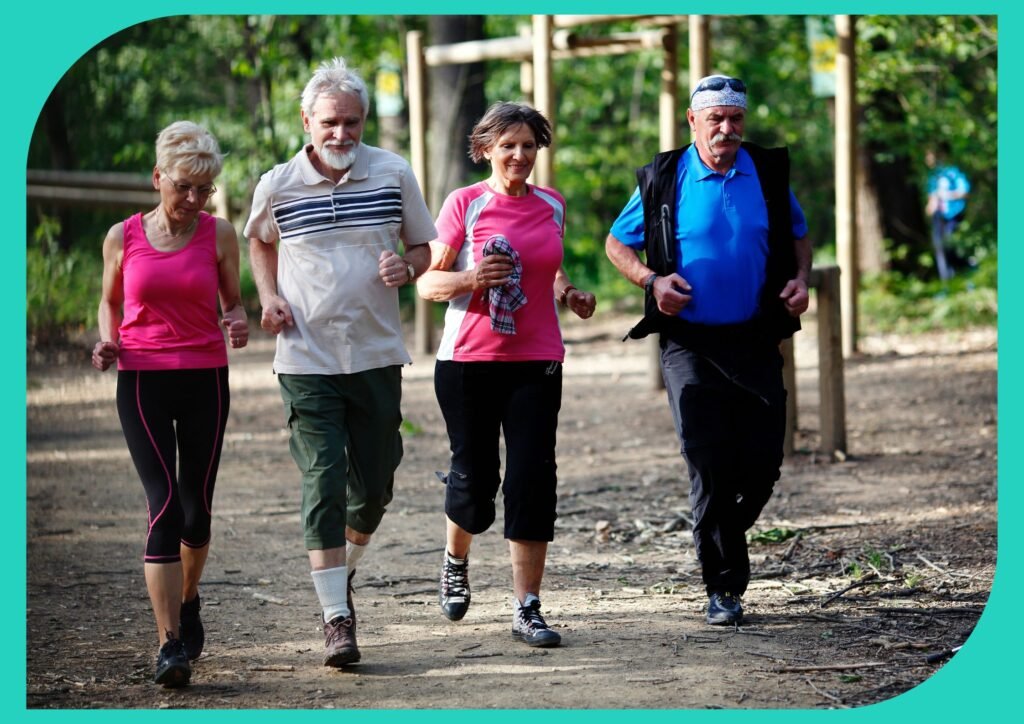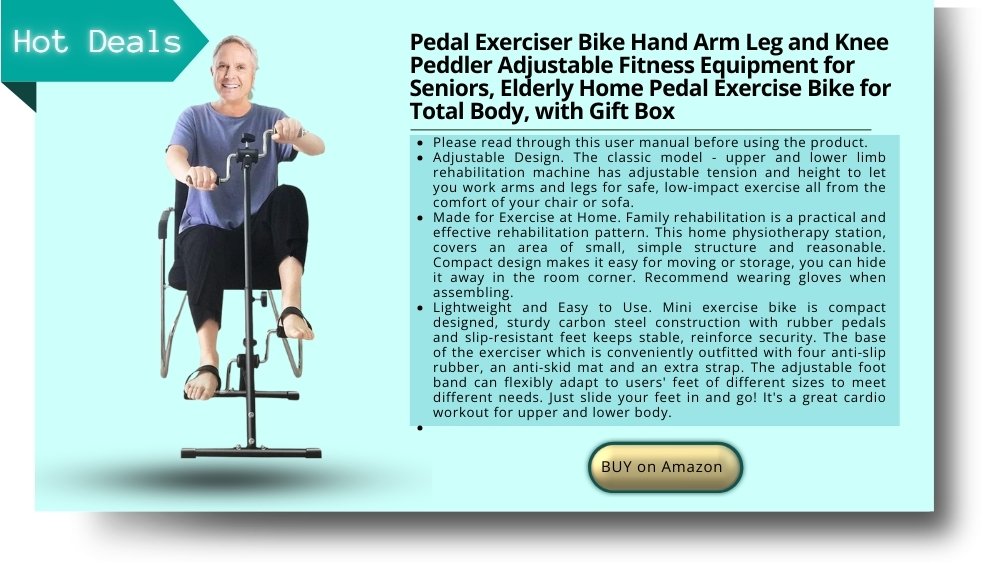Last Updated on June 30, 2025 by Julian Espinosa
Did you know that climbing stairs instead of taking the elevator could dramatically reduce your cancer risk? Revolutionary research from 2023 has revealed something remarkable: just 4-5 minutes of vigorous daily activity, done in short bursts of around one minute each, is linked to an overall reduction in cancer risk by up to 18 percent, and up to 32 percent for cancer types linked to physical activity.
This isn’t about joining a gym or committing to hour-long workouts. We’re talking about “incidental vigorous activities” – those everyday tasks that naturally make your heart pump faster. Think carrying groceries up the stairs, playing tag with grandchildren, or dancing while doing housework. These simple activities, woven seamlessly into your daily routine, could be your secret weapon against cancer.
The groundbreaking UK Biobank study found that small amounts of vigorous intermittent lifestyle physical activity (VILPA) were associated with lower incident cancer risk, even among adults who don’t exercise regularly. This means that whether you’re retired, busy with family responsibilities, or simply prefer not to exercise formally, you can still harness the cancer-fighting power of movement.
In this comprehensive guide, we’ll explore how these bite-sized bursts of activity work their magic, which specific activities pack the biggest punch, and how you can effortlessly incorporate them into your life at any age. From the science behind why your body responds so positively to these short bursts to practical tips for making movement part of your everyday routine, you’ll discover that preventing cancer might be easier than you ever imagined.

The Science Behind Incidental Vigorous Activities and Cancer Risk Reduction
The concept of incidental vigorous activities represents a paradigm shift in how we think about exercise and health. Unlike traditional exercise programs that require dedicated time and space, these activities seamlessly integrate into the fabric of daily life.
The landmark UK Biobank Accelerometry Study evaluated over 22,000 adults who didn’t engage in regular exercise, finding that even small amounts of daily vigorous intermittent physical activity were associated with significantly lower incident cancer risk. This research is particularly encouraging for those who may feel intimidated by traditional fitness routines or have physical limitations that make conventional exercise challenging.
The beauty of incidental vigorous activities lies in their accessibility. Whether you’re managing a household, working, or enjoying retirement, opportunities for these beneficial bursts of movement present themselves throughout the day. A 30-second sprint to catch the bus, vigorously scrubbing the bathtub, or enthusiastically greeting a friend can all contribute to your daily dose of cancer-fighting activity.

Prefer to listen rather than read?

What makes these activities so powerful is their intensity rather than their duration. When you engage in short bursts of vigorous movement, your body experiences a cascade of beneficial physiological changes that can help protect against cancer development.
Understanding the Mechanisms: How Movement Fights Cancer
The connection between physical activity and cancer prevention operates through several interconnected pathways that work together to create a hostile environment for cancer development.
- Hormonal Regulation When you engage in vigorous activity, even for brief periods, your body modulates hormone levels that are linked to cancer growth. Physical activity helps reduce circulating levels of insulin and insulin-like growth factors (IGFs), which can promote cancer cell proliferation when elevated. Additionally, it helps balance estrogen levels, which is particularly important for reducing the risk of hormone-sensitive cancers like breast and endometrial cancer.
- Immune System Enhancement Your immune system serves as your body’s natural defense against abnormal cell growth. Regular bursts of vigorous activity strengthen immune function, making your body more efficient at identifying and eliminating potentially cancerous cells before they can establish themselves and multiply.
- Inflammation Reduction Chronic inflammation creates an environment conducive to cancer development. Physical activity, even in short bursts, helps reduce inflammatory markers throughout the body, creating a cellular environment that’s less favorable to cancer growth.
- Improved Circulation and Oxygenation Vigorous activity enhances blood flow and oxygen delivery to tissues throughout your body. Well-oxygenated cells are more resistant to the cellular damage that can lead to cancer, and improved circulation helps your body’s natural detoxification processes work more effectively.

Current Guidelines and Research Updates
The American Cancer Society currently recommends that adults get 150-300 minutes per week of moderate intensity activity or 75-150 minutes per week of vigorous intensity activity, or an equal combination. However, the exciting news from recent research is that you don’t need to achieve these targets through formal exercise alone.
The Centers for Disease Control and Prevention confirms that regular physical activity lowers your risk of eight common cancers, including breast, colon, endometrial, kidney, bladder, esophageal, lung, and stomach cancers.
What’s particularly encouraging is that current guidelines emphasize that any amount of physical activity is better than none, and all physical activity counts. This means that every flight of stairs climbed, every grocery bag carried, and every moment of active play contributes to your overall health and cancer prevention efforts.
Age-Specific Approaches to Incidental Vigorous Activities
For Active Seniors (50+)
As we mature, maintaining physical activity becomes increasingly important for overall health and cancer prevention. The good news is that incidental vigorous activities can be particularly beneficial for seniors because they don’t require the sustained effort that might be challenging for those with joint concerns or other age-related considerations.
Simple modifications can make everyday activities more vigorous:
- Take stairs whenever possible, using the handrail for support if needed
- Park farther away from destinations to increase walking distance
- Carry groceries or laundry in smaller, manageable loads to create more trips
- Garden with enthusiasm – digging, weeding, and raking can all provide vigorous bursts
- Play actively with grandchildren – chase games, dancing, or throwing a ball
- Clean house with energy – vacuuming, mopping, and scrubbing can become mini-workouts
For Middle-Aged Adults (40-65)
This life stage often comes with increased responsibilities and time constraints, making incidental vigorous activities particularly valuable. The key is finding ways to add intensity to activities you’re already doing:
Use lunch breaks for brisk walks or stair climbing in your building
Take phone calls while walking briskly or doing light exercises
Use commercial breaks during TV time for quick bursts of movement
Make household chores more vigorous – race against the clock while cleaning
Choose active hobbies like dancing, hiking, or recreational sports

For Younger Adults Building Healthy Habits
Establishing patterns of incidental vigorous activity early creates a foundation for lifelong cancer prevention:
- Bike or walk for short errands instead of driving
- Take stairs instead of elevators or escalators
- Engage in active play with children or pets
- Make social activities more active – dancing, bowling, or active games
- Use standing desks or take walking meetings when possible
Practical Implementation: Making Movement Natural
The secret to successfully incorporating incidental vigorous activities is to make them feel natural and enjoyable rather than forced or burdensome.
- Start Small and Build Gradually Begin with one or two activities that feel manageable and enjoyable. Perhaps start by taking the stairs instead of the elevator once a day, or carrying groceries without using a cart. As these become habitual, you can gradually add more opportunities for vigorous movement.
- Focus on Opportunities, Not Obligations Rather than viewing these activities as exercise requirements, think of them as opportunities to add energy and vitality to your day. This mindset shift can make the difference between sustainable lifestyle changes and short-lived attempts at improvement.
- Listen to Your Body The goal is to increase your heart rate and breathing without causing strain or discomfort. If you have any health conditions or concerns, consult with your healthcare provider before significantly increasing your activity level.
- Make It Social Many incidental vigorous activities can be more enjoyable when shared with others. Invite family members or friends to join you for active errands, household projects, or play time with children.

The Compound Effect: Small Changes, Big Results
What makes incidental vigorous activities so powerful is their cumulative effect. Research shows that just 4.5 minutes of vigorous activity per day could reduce the risk of some cancer types by up to 32%. This means that several one-minute bursts of activity throughout your day can add up to significant health benefits.
Consider this: if you climb stairs for one minute in the morning, enthusiastically clean for two minutes after lunch, and play actively with pets or grandchildren for two minutes in the evening, you’ve already exceeded the daily minimum that research suggests can be protective against cancer.
The beauty of this approach is that it doesn’t require perfect consistency to be beneficial. Even on days when you don’t achieve your ideal amount of vigorous activity, any movement you do incorporate still contributes to your long-term health and cancer prevention efforts.
Beyond Cancer Prevention: Additional Health Benefits
While cancer prevention is a compelling reason to incorporate incidental vigorous activities, the benefits extend far beyond reducing cancer risk:
- Cognitive Function: Exercise supports brain health and may help prevent cognitive decline
- Cardiovascular Health: Short bursts of vigorous activity strengthen your heart and improve circulation
- Mental Health: Physical activity releases endorphins that enhance mood and reduce stress
- Bone Health: Weight-bearing vigorous activities help maintain bone density
- Balance and Coordination: Dynamic movements improve stability and reduce fall risk
- Energy Levels: Regular activity, even in short bursts, can increase overall energy and vitality
- Sleep Quality: Physical activity often leads to better sleep patterns

Creating Your Personal Action Plan
The most effective approach to incorporating incidental vigorous activities is to create a personalized plan that fits your lifestyle, preferences, and physical capabilities.
- Assess Your Current Routine Take a day or two to notice opportunities in your current routine where you could add brief bursts of vigorous activity. Look for moments when you’re already moving but could increase the intensity or duration slightly.
- Choose Activities You Enjoy The activities you’re most likely to stick with are those you find genuinely enjoyable or satisfying. If you love gardening, focus on making your gardening more vigorous. If you enjoy music, incorporate more dancing into your day.
- Set Realistic Expectations Remember that the goal is progress, not perfection. Even one minute of vigorous activity is beneficial, and some days will naturally provide more opportunities than others.
- Track Your Success Consider keeping a simple log of your vigorous activities, not as a strict requirement but as a way to notice patterns and celebrate your successes. You might be surprised by how much activity you’re already incorporating.
Do you currently include any vigorous activities in your daily routine? If not, which of these simple strategies appeals to you most? We’d love to hear about your experiences and plans in the comments below!

Embrace these tasks with enthusiasm, knowing that you are not only maintaining a tidy home but also engaging in a practical and effective way to stay active and improve your overall fitness. So, the next time you clean, relish the fact that you are giving your body a workout too.
Conclusion
The link between incidental vigorous activity and reduced cancer risks offers an exciting perspective on health and well-being. Incorporating movement into our daily routines can have a significant impact on our overall health, and it may even play a role in reducing the risk of cancer.
By embracing activities like climbing stairs, carrying shopping bags, and playing with kids, we can take essential steps toward a healthier and happier life. So, let’s embrace the joy of movement and discover how simple, everyday activities can transform our health for the better.
FAQs
Can incidental vigorous activities replace regular exercise?
While incidental vigorous activities provide significant health benefits and can contribute to cancer prevention, they work best as part of a comprehensive approach to health. If you enjoy formal exercise, continue with it. If you don’t, these activities can provide substantial benefits on their own, especially when combined with a healthy diet and lifestyle.
How much incidental vigorous activity is enough?
Vigorous activity typically makes you breathe harder and increases your heart rate noticeably. You should still be able to speak, but you’ll likely feel slightly out of breath. Examples include climbing stairs quickly, carrying heavy items, or active play that makes you feel energized rather than exhausted.
Is there a minimum duration for each burst of vigorous activity?
Recent research suggests that even 30-second to 2-minute bursts of vigorous activity can be beneficial. The key is that these brief periods add up throughout the day. Aim for a total of 4-5 minutes daily, broken into short bursts.
Are there any risks associated with sudden bursts of vigorous activity?
For most people, gradually increasing daily activity is safe and beneficial. However, if you have heart conditions, joint problems, or other health concerns, consult your healthcare provider before significantly increasing your activity level. Start slowly and listen to your body.

What if I have physical limitations that prevent some activities?
The beauty of incidental vigorous activities is their adaptability. Focus on activities that work within your physical capabilities. Even small increases in intensity during activities you can already do safely can provide benefits. Chair exercises, arm movements, or modified household tasks can all be made more vigorous.
How quickly can I expect to see health benefits?
Some benefits, like improved mood and energy levels, may be noticeable within days or weeks. However, the cancer-protective effects develop over time with consistent activity. The key is to think of these activities as an investment in long-term health rather than expecting immediate dramatic changes.
Can I count household chores as vigorous activity?
Absolutely! Vigorous household chores like scrubbing, vacuuming with energy, cleaning windows, or rearranging furniture can definitely qualify as vigorous activity. The key is doing them with enough intensity to elevate your heart rate and breathing.
What’s the difference between this approach and traditional exercise programs?
Traditional exercise programs involve dedicated time and often specific equipment or locations. Incidental vigorous activities are woven into daily life and use activities you’re already doing. Both approaches have value, and they can complement each other beautifully.
Disclaimer
The content provided on MySeniors.World is for informational purposes only and is not intended as either financial or medical advice. Always consult a qualified professional before making any investment or health-related decisions.
Posts may contain affiliate links, meaning we earn a commission – at no additional cost to you, if you click through and make a purchase. Your support helps us continue providing valuable content.
REFERENCES
- Stamatakis, E., et al. (2023). Vigorous Intermittent Lifestyle Physical Activity and Cancer Incidence Among Nonexercising Adults: The UK Biobank Accelerometry Study. JAMA Oncology.
- American Cancer Society. (2024). Guideline for Diet and Physical Activity for Cancer Prevention.
- Centers for Disease Control and Prevention. (2024). Physical Activity and Cancer.
- World Health Organization. (2024). Physical Activity Guidelines.
- National Cancer Institute. (2024). Physical Activity and Cancer Fact Sheet.
- World Cancer Research Fund. (2025). Be Physically Active – Recommendation Evidence.



